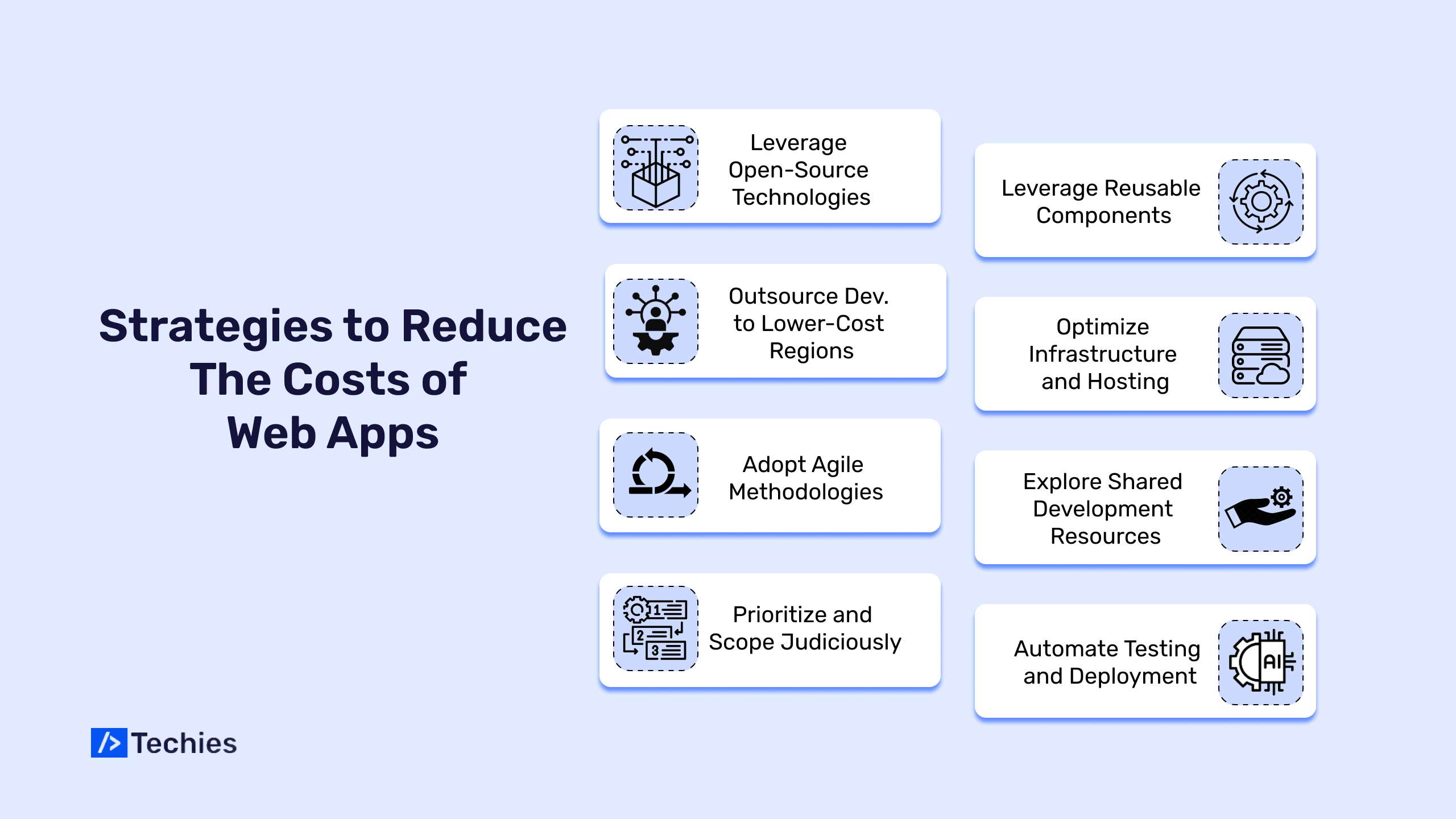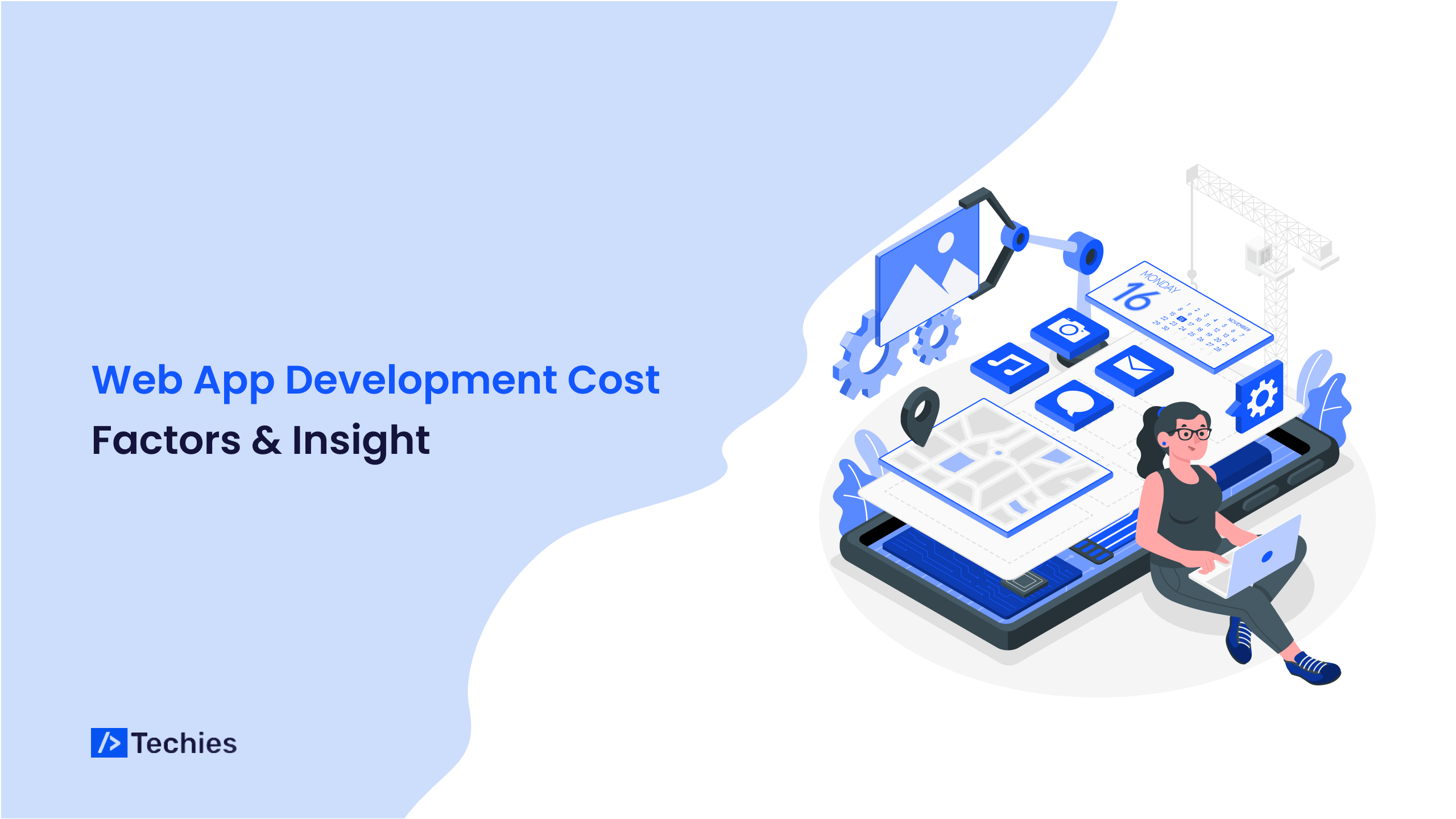Web Application Development Cost – Factors & Insight
Web Development Cost
Budgeting a Web Development Project is not Easy. One of the most common reasons for project failures is unexpected expenses during web development. According to TeamStage, 55% of tech companies overrun their budgets simply because they make mistakes in project cost estimation. Therefore, understanding the cost of web application development is important.
The tricky part is that there’s No One-Size-Fits-All answer. It’s like guessing the cost of a house. You can make assumptions, but the final price will be based on the number of rooms, layout, materials used, interior and exterior works, total area, location, and construction team composition.
The wide range of web application development costs can make it challenging to provide a precise estimate. A quick Google search might show that the costs can range anywhere from $20,000 to $200,000 or more, depending on the project’s level of complexity and specifications. This broad spectrum can be frustrating for clients looking for a clear, upfront understanding of the required financial investment.
In this comprehensive guide, we’ll explore the key factors that influence web application development costs, the various estimation techniques available, and strategies for optimizing your budget and minimizing expenses. Before you know about the factors, you have to know about the average cost and how it is calculated.
What's the Average Cost of Web App Development?
- A simple web app with just the basics can set you back anywhere from $20,000 to $40,000.
- If you want something with more features, like a medium-sized app, you’re looking at spending between $60,000 and $200,000.
- And if you’re after a natural heavy featured rich, a complex web app can start from $250,000 and go up from there.
Factors Influencing Web Application Development Costs
By exploring the various elements contributing to the overall cost of web app development, businesses can better plan their budgets, set realistic expectations, and make informed decisions throughout the development process. Let’s delve into the key factors that impact web application development costs:

Type of Web App
Static Web Apps: These are basic websites with limited interactivity, usually consisting of a few pages with static content. They tend to have a lower development cost, typically from $5,000 to $15,000.
Dynamic Web Apps: These web applications incorporate interactive features, databases, and server-side logic. They offer more functionality and user engagement, resulting in a higher development cost, typically ranging from $15,000 to $50,000.
Complex Web Apps: These are feature-rich, enterprise-level web applications that often include advanced functionalities, integration with multiple systems, and complex user interactions. Depending on their scope and complexity, the development cost for these web apps can range from $50,000 to $250,000 or more.
Feature & Functionality
- User authentication and authorization.
- Content management system (CMS) integration.
- E-commerce capabilities.
- Real-time communication (e.g., chat, video conferencing).
- Mobile responsiveness and optimization.
- Integration with third-party APIs and services.
- Data visualization and reporting.
UX and Design
Team & Location
In brief:
- North America and Western Europe boast expertise but come with higher price tags.
- Eastern Europe offers a blend of quality and affordability.
- Asian nations provide cost-effective solutions along with diverse skill sets.
For a comprehensive breakdown, refer to the table below:
| Location | Hourly Rate | Advantages |
|---|---|---|
| India | $30 - $60 | Abundant talent pool, Cost-effectiveness |
| North America | $100 - $250 | High development standards, Cultural proximity |
| United Kingdom | $80 - $200 | Quality service, Regulatory compliance |
| Canada | $80 - $150 | Close to the US, Skilled workforce |
| Australia | $100 - $150 | High-quality output, Minimal time-zone differences |
| Germany | $80 - $120 | Strong work ethic, Extensive expertise |
| Ukraine | $60 - $100 | Balance of cost and quality, Proficient talent |
Technology Stack
Developer Expertise and Team Composition
Timeline and Development Methodology
Third-Party Integrations and APIs
Ongoing Maintenance and Support
By understanding these key factors, businesses can better assess the potential costs involved in web application development and make informed decisions to ensure the successful execution of their projects within the desired budget.
Strategies to Reduce the Costs of Web App Development
In addition to accurately estimating your project budget, it’s essential to seek ways to cut down on web app development expenses. It’s a top priority that doesn’t mean compromising on quality. To ensure a successful partnership and a satisfying outcome, you must equip yourself with essential considerations and budgeting tips. So, let’s get started!

Leverage Open-Source Technologies
Outsource Development to Lower-Cost Regions
Adopt Agile Methodologies
Prioritize and Scope Judiciously
Leverage Reusable Components
Optimize Infrastructure and Hosting
Explore Shared Development Resources
Automate Testing and Deployment
By employing these strategies, businesses can effectively manage and reduce the expenses associated with web application development, ensuring that their digital projects deliver maximum value within their budgetary constraints.
Web App Cost Breakdown at DTechies
At DTechies, we strive to simplify the process of estimating web application development costs. We aim to ensure transparency and accuracy right from the outset, following a straightforward six-step process:
- You provide an overview of your project, detailing its scope, objectives, and requirements.
- We engage with your team to gather additional information about your business needs, target audience, and desired functionalities for the web app.
- Our project consultants conduct initial research to generate a rough estimate of the development costs and timelines.
- We offer you an initial estimated cost and timeline based on the preliminary information.
- Upon your confirmation and interest, we delve into detailed discussions with you.
- Our team produces a more precise and comprehensive estimation, covering all functionalities, technologies, and resources required for the project.
Ultimately, we deliver a finalized, detailed estimation encompassing all aspects discussed.
Conclusion
In conclusion, estimating the cost of your web app involves various factors and considerations, as outlined in this article. While the figures provided offer a helpful reference point, it’s essential to recognize that every project is unique, and actual costs may vary.
For a more tailored assessment of your project’s budget, along with personalized consultations and actionable insights, we invite you to connect with our team of experts at DTechies. As a reputable web app development company, are committed to leveraging extensive experience and expertise to assist you in navigating the complexities of your project and arriving at a comprehensive solution.Let’s connect and turn your web app vision into reality!
Trust Us to Craft a Cutting-Edge Web App with Expertise and Commitment
Frequently Asked Questions
How to Estimate the Cost of a Web App
Determining the cost of web app development is more than just a one-size-fits-all equation. Typically, it involves considering factors such as:
- The hourly rate charged by the development team or agency
- Expenses related to development resources like software licenses and third-party services
- Costs associated with the number of features, integrations, and customizations, among other considerations.
What factors influence the cost of developing a web app?
Several factors can affect the cost of web application development, including the complexity of features, the technology stack used, the level of customization required, the size and experience of the development team, and the project timeline.
How can I reduce the cost of building a web app?
To lower web app development costs, prioritize essential features, utilize open-source solutions, outsource specific tasks to regions with lower labor costs, embrace agile development methodologies, and invest in efficient project management practices.
Is it better to develop a web app in-house or outsource it?
Having a skilled in-house web app development team eliminates the need for outsourcing. However, many organizations need more expertise. In such instances, outsourcing is a more cost-effective and time-saving option than building an in-house team from scratch.
How much time does it take to make a web app?
It takes about 8-10 weeks to create a simple app. But if the app is more complicated, it can take longer. It may take nine months or more to finish for really complex projects.

ABOUT AUTHOR
Roopesh Jain
Subscribe to Our Newsletter
Let's Work Together
Office Location
1042, Second Floor, Sector-4, Hiran Magri, Udaipur, Rajasthan - 313002
